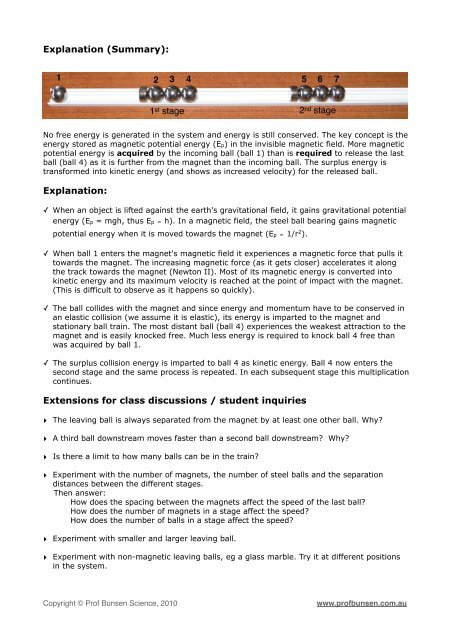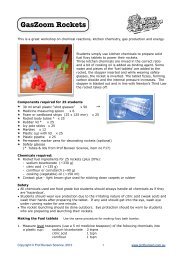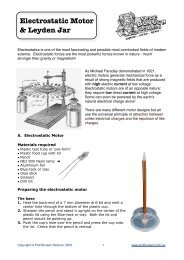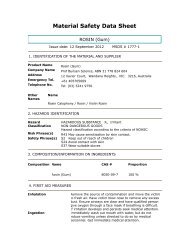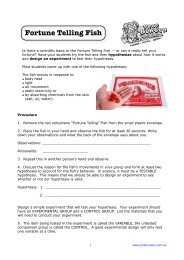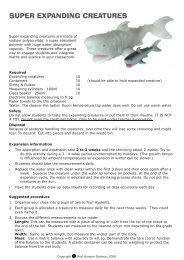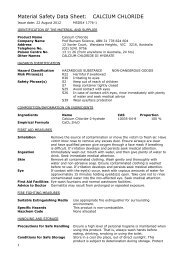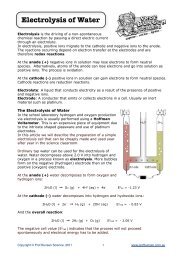Magnetic Accelerator - Prof Bunsen
Magnetic Accelerator - Prof Bunsen
Magnetic Accelerator - Prof Bunsen
- No tags were found...
Create successful ePaper yourself
Turn your PDF publications into a flip-book with our unique Google optimized e-Paper software.
Explanation (Summary):1 2 3 4 5 6 71 st stage 2 nd stageNo free energy is generated in the system and energy is still conserved. The key concept is theenergy stored as magnetic potential energy (Ep) in the invisible magnetic field. More magneticpotential energy is acquired by the incoming ball (ball 1) than is required to release the lastball (ball 4) as it is further from the magnet than the incoming ball. The surplus energy istransformed into kinetic energy (and shows as increased velocity) for the released ball.Explanation:✓ When an object is lifted against the earth's gravitational field, it gains gravitational potentialenergy (Ep = mgh, thus Ep ∝ h). In a magnetic field, the steel ball bearing gains magneticpotential energy when it is moved towards the magnet (Ep ∝ 1/r 2 ).✓ When ball 1 enters the magnet's magnetic field it experiences a magnetic force that pulls ittowards the magnet. The increasing magnetic force (as it gets closer) accelerates it alongthe track towards the magnet (Newton II). Most of its magnetic energy is converted intokinetic energy and its maximum velocity is reached at the point of impact with the magnet.(This is difficult to observe as it happens so quickly).✓ The ball collides with the magnet and since energy and momentum have to be conserved inan elastic collision (we assume it is elastic), its energy is imparted to the magnet andstationary ball train. The most distant ball (ball 4) experiences the weakest attraction to themagnet and is easily knocked free. Much less energy is required to knock ball 4 free thanwas acquired by ball 1.✓ The surplus collision energy is imparted to ball 4 as kinetic energy. Ball 4 now enters thesecond stage and the same process is repeated. In each subsequent stage this multiplicationcontinues.Extensions for class discussions / student inquiries‣ The leaving ball is always separated from the magnet by at least one other ball. Why?‣ A third ball downstream moves faster than a second ball downstream? Why?‣ Is there a limit to how many balls can be in the train?‣ Experiment with the number of magnets, the number of steel balls and the separationdistances between the different stages.Then answer:How does the spacing between the magnets affect the speed of the last ball?How does the number of magnets in a stage affect the speed?How does the number of balls in a stage affect the speed?‣ Experiment with smaller and larger leaving ball.‣ Experiment with non-magnetic leaving balls, eg a glass marble. Try it at different positionsin the system.Copyright © <strong>Prof</strong> <strong>Bunsen</strong> Science, 2010www.profbunsen.com.au


